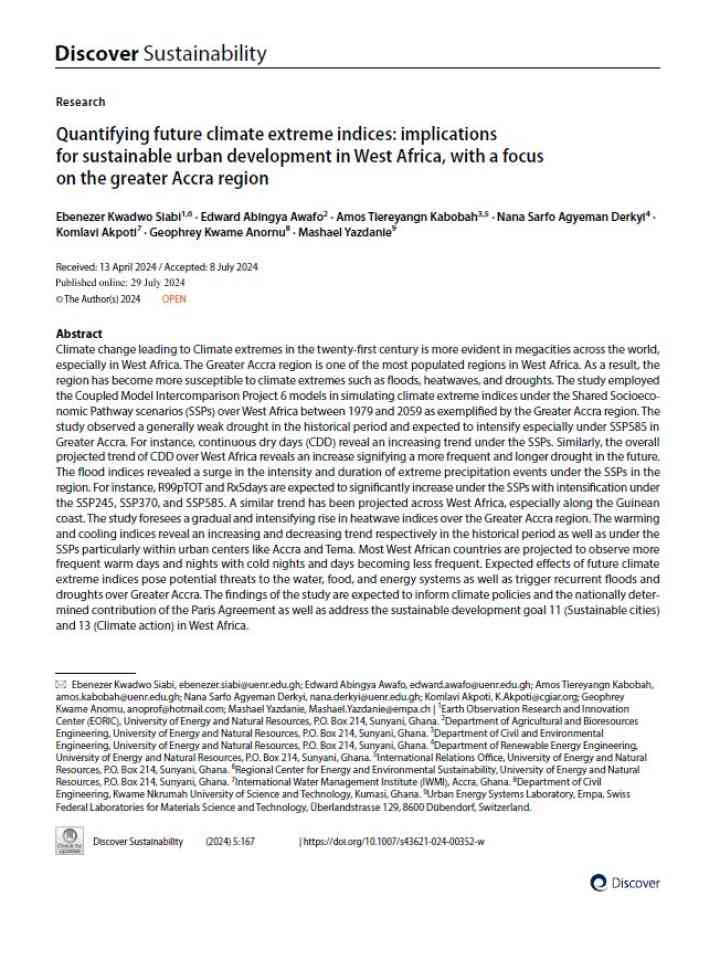Quantifying future climate extreme indices: implications for sustainable urban development in West Africa, with a focus on the greater Accra region
The study employed the Coupled Model Intercomparison Project 6 models in simulating climate extreme indices under the Shared Socioeconomic Pathway scenarios (SSPs) over West Africa between 1979 and 2059 as exemplified by the Greater Accra region. The study observed a generally weak drought in the historical period and expected to intensify especially under SSP585 in Greater Accra. For instance, continuous dry days (CDD) reveal an increasing trend under the SSPs. Similarly, the overall projected trend of CDD over West Africa reveals an increase signifying a more frequent and longer drought in the future.
The flood indices revealed a surge in the intensity and duration of extreme precipitation events under the SSPs in the region. For instance, R99pTOT and Rx5days are expected to significantly increase under the SSPs with intensification under the SSP245, SSP370, and SSP585. A similar trend has been projected across West Africa, especially along the Guinean coast. The study foresees a gradual and intensifying rise in heatwave indices over the Greater Accra region. The warming and cooling indices reveal an increasing and decreasing trend respectively in the historical period as well as under the SSPs particularly within urban centers like Accra and Tema. Most West African countries are projected to observe more frequent warm days and nights with cold nights and days becoming less frequent.
Explore further
